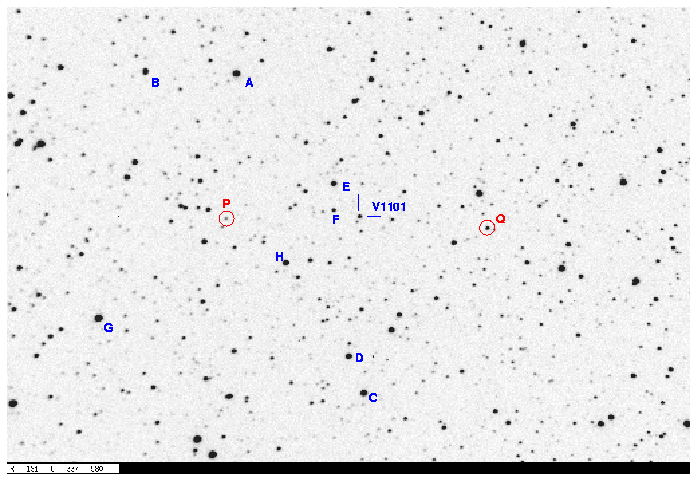
On the night of August 21/22, 2004 EDT, I used the RIT Observatory's 12-inch Meade telescope and SBIG ST8 CCD camera to monitor the star V1101 Aql, a cataclysmic variable under study by the Center for Backyard Astrophysics. I also took a few pictures of McNeil's Nebula , hoping to see if the central star has changed signficantly since it was last seen in May, 2004.
The plan:
Notes from the night
Here's a chart of the field of V1101 Aql taken last night. The field is about 20 arcminutes wide. Click on the picture for a larger version.
Note that
I discovered that two stars in this field happen to be variables. Neither appears in the GCVS catalog II/214A on SIMBAD.
I measured the instrumental magnitude of each star with aperture photometry, using a radius of 4 pixels = 7.4 arcseconds, and sky defined by an annulus around each star. Following the procedures outlined by Kent Honeycutt's article on inhomogeneous ensemble photometry, I used all stars available in each image to define a reference frame, and measured each star against this frame.
Below is a graph of the scatter in differential magnitude versus magnitude. Note that the brightest stars included in the solution may be slightly saturated. I made a series of preliminary solutions and discarded stars which had large scatter due to close companions, or due to their position near the edge of the frame, etc.
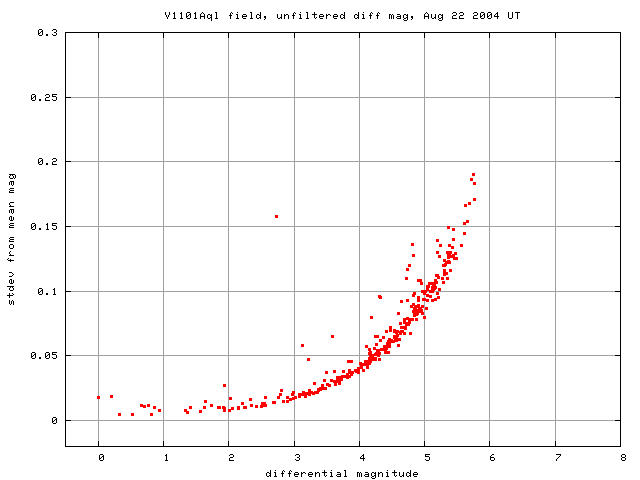
V1101 Aql is the outlier at instrumental mag 3.1 with stdev 0.06 mag. The really big outlier at instrumental mag = 2.8 and stdev = 0.16 is the star marked "Q" in the chart above. The star marked "P" has instrumental mag 4.8 and stdev 0.14 in the solution. The other outliers are stars which look suspicious to me, but for which I haven't found a certain reason to discard their variation.
Light curves for selected stars in the field are shown below. It is clear that most of the stars in the field are not varying appreciably, but V1101 Aql is, as the green light curve shows. The other data belong to stars A through H.

Here are light curves of the two new variable stars, P (faint) and Q (bright), on the same scale:
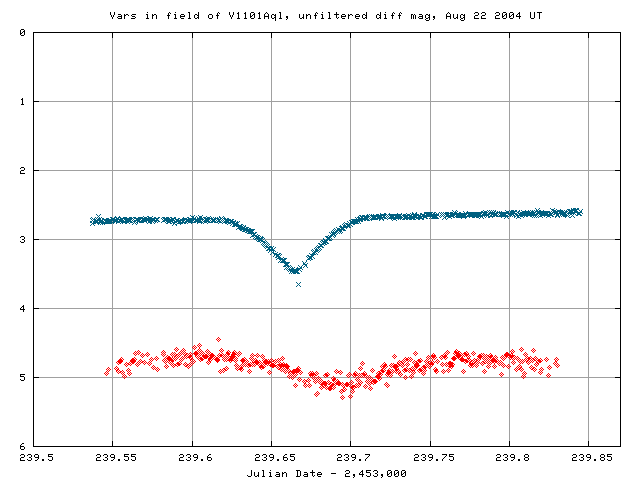
Here's a closeup of the variation in V1101 Aql itself:
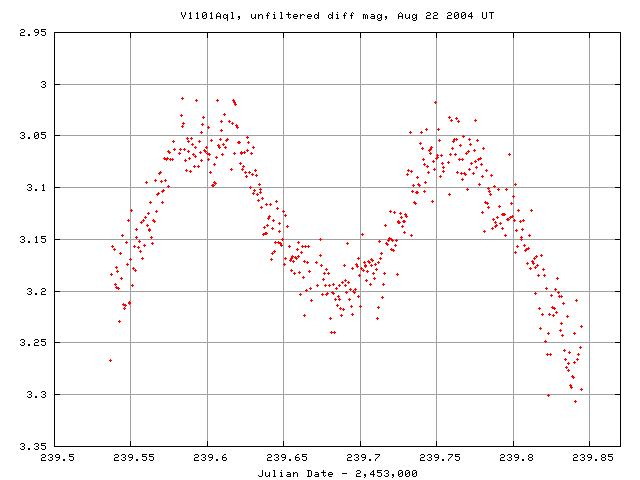
It looks to me as if my observations were too short to show clearly any microstructure in this light curve; all that I can see is the large-scale sinusoidal periodicity. I guess that I should increase my exposure times ....
I've made a table of the measurements themselves, with three different flavors of time. Here's the start of the table:
# Measurements of V1101 Aql made at RIT Obs, Aug_ 22, 2004 UT, # taken by Michael Richmond. # All data taken with 12-inch LX-200 + no filter + SBIG ST-8 CCD # no focal reducer, so at native f/10 # Each exposure 30 seconds long; the tabulated times are midexposure # and accurate only to +/- 1 second. # 'mag' is a differential magnitude based on ensemble photometry # tabulated value is 'mag fainter than star A = USNOA2.0 1050-16879362' # # UT day JD-2,450,000 HJD-2,450,000 mag Aug_22.03689 3239.53689 3239.54143 2.597 Aug_22.03744 3239.53744 3239.54198 2.514 Aug_22.03801 3239.53801 3239.54255 2.487
Since I haven't heard of any measurements of the star powering McNeil's Nebula since May, 2004, I decided to try to take some images at the very end of the night. Orion is still very low in the sky, but it fortunately lies between two trees as seen from the RIT Observatory; I was able to take a series of unfiltered 30-second images at airmass 3.2 or so. Combining 10 of these 30-second images yields this (click on the image for a larger version):
Compare this to an image taken by Japanese astronomer Yasuo Sano in February, 2004, near the height of the outburst:
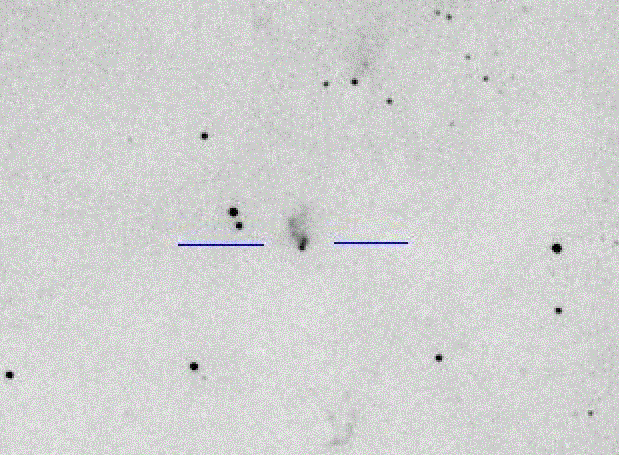
I guess that one might claim that the central star is certainly not brighter than it was in February, 2004; with less certainty, the star may be slightly fainter. But that's about all I would venture to say at this point. Sigh.
Last modified 8/23/2004 by MWR.